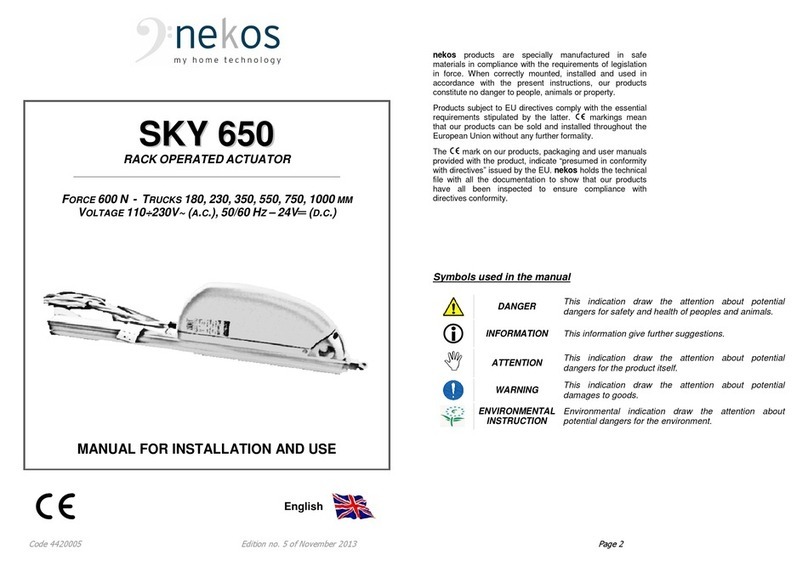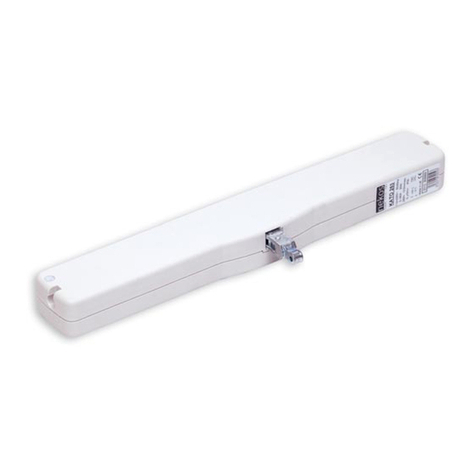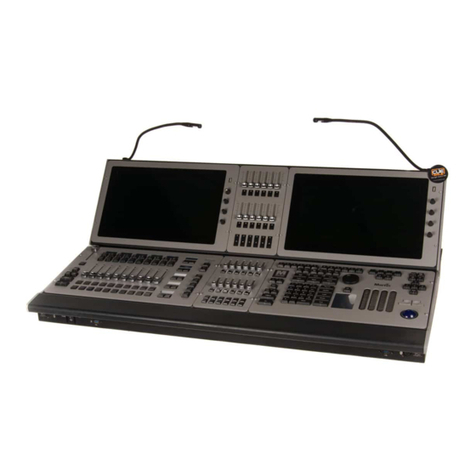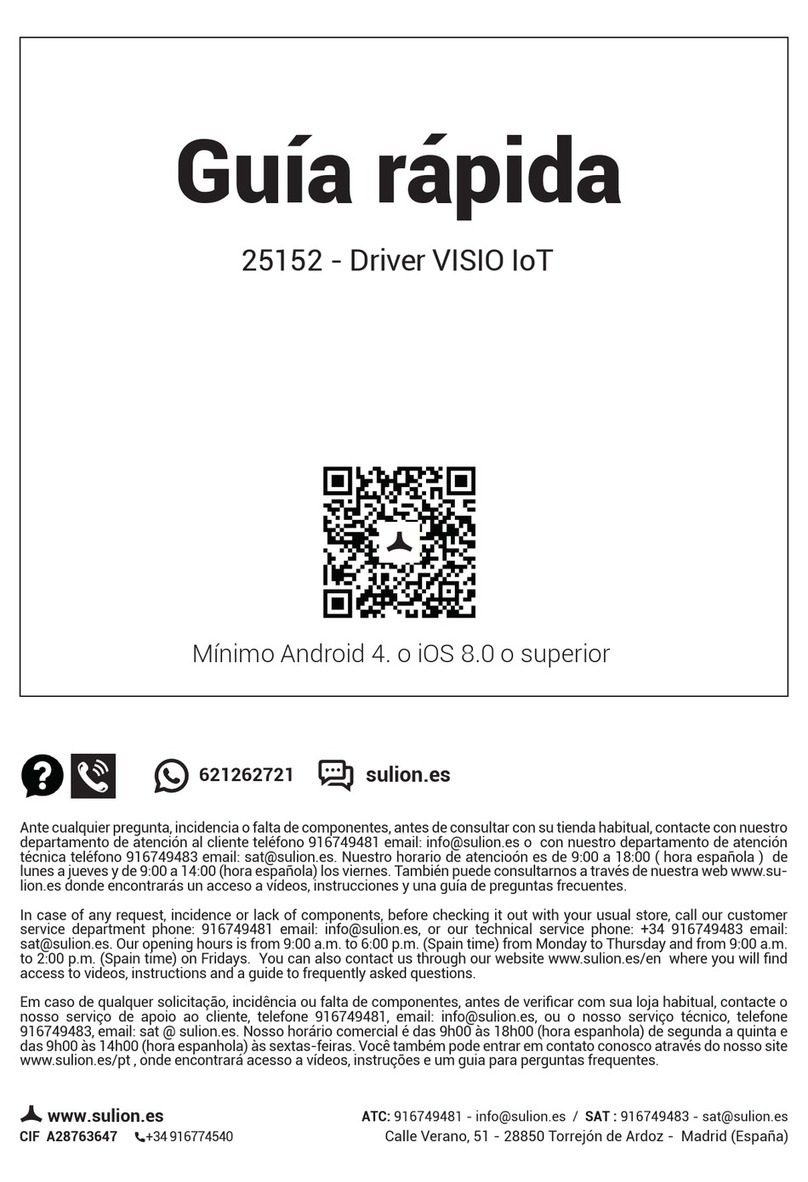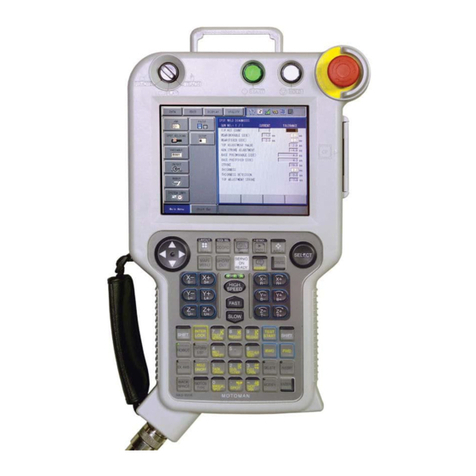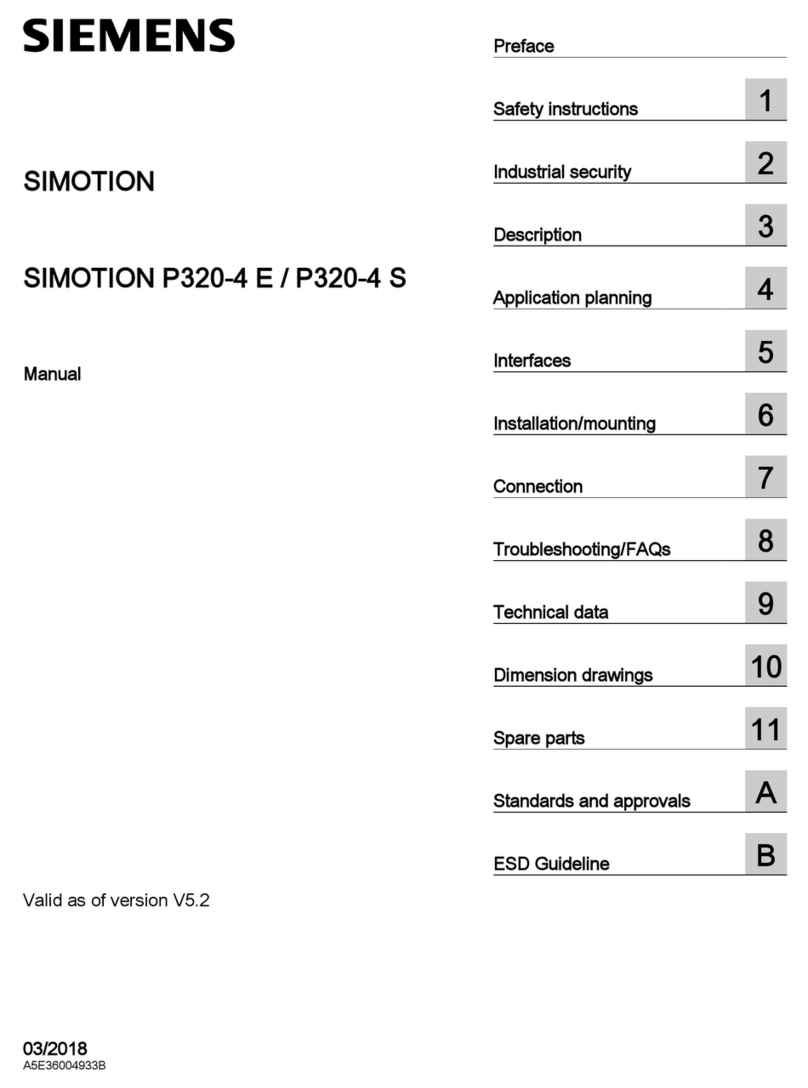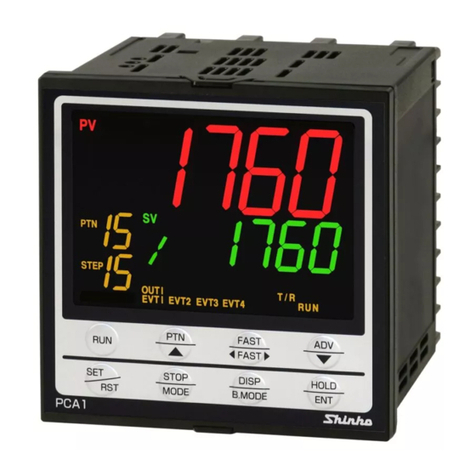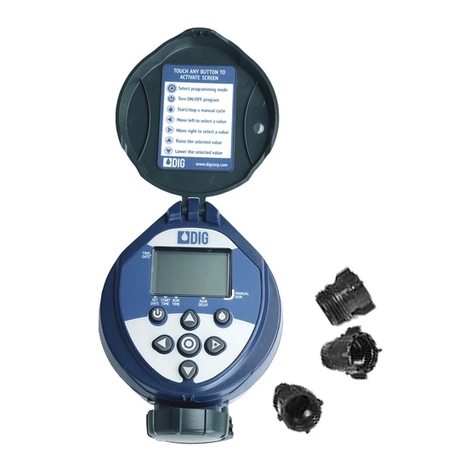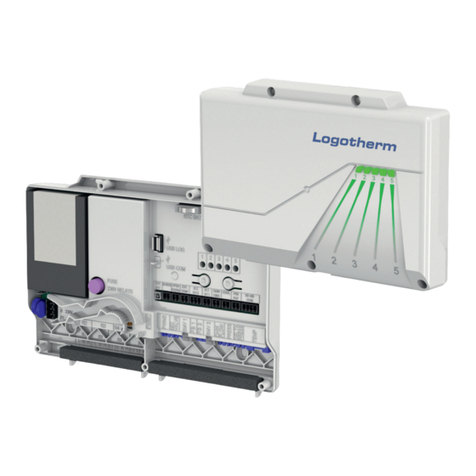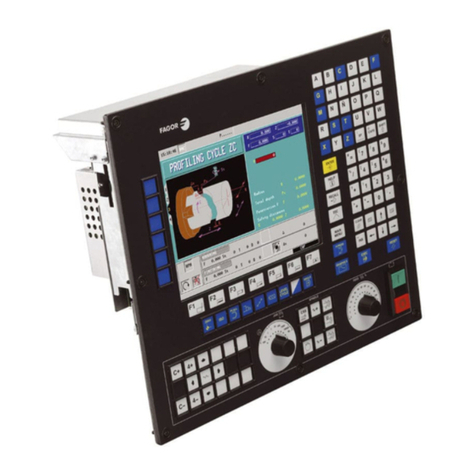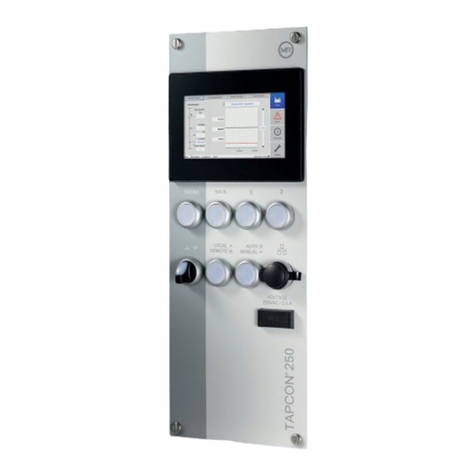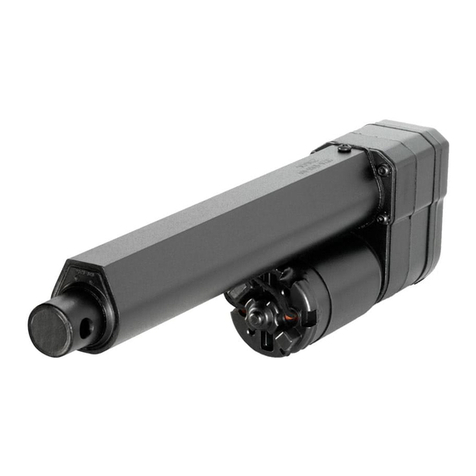nekos KIMO 202 User manual

KIMO
INSTRUCTION MANUAL
CHAIN ACTUATOR
Force 200N –
Maximum stroke 2
Electrical feeding 24V
NEKOS
S.r.l. -
+39 0424 411011
EN
4420140 - Rev. 2006
KIMO
202
INSTRUCTION MANUAL
CHAIN ACTUATOR
Maximum stroke 2
50 mm
Electrical feeding 24V
Via Capitoni, 7/5 - 36064 Colceresa
(VI)
+39 0424 411011
– +39 0424 411013 - www.nekos.it -
info@nekos.it
(VI)
– ITALY
2
USER INSTRUCTIONS
CAUTION: Carefully observe all the following installation
instructions to ensure personal safety.
The device is not intended for use by persons (including
children) with reduced physical, sensory or mental capabilities,
or lacking experience and knowledge. Do not allow children to
play with the fixed controls and keep any remote-control units
out of their reach.
Have installation checks performed periodically by qualified
personnel from a service centre authorised by the manufacturer.
Do not use if repair or adjustment is required.
CAUTION: if the power cable is damaged, it must be replaced by
qualified personnel from a service centre authorised by the
manufacturer.
CAUTION. Disconnect the power supply during cleaning or
maintenance operations. Do not use solvents or jets of water to
wash the appliance; the appliance should not be submerged in
water.
In the event of fault or malfunction, switch off the device at the
main switch. All repairs and adjustments (e.g. setting the stroke)
must only be performed by qualified personnel from a service
centre authorised by the manufacturer.
Always request exclusive use of original spare parts. Failure to
respect this condition could compromise safety and invalidate
the benefits contained in the warranty for the appliance. In the
event of any problems or queries, consult your agent or contact
the manufacturer directly.
The A-weighted sound pressure level is less than 70dB(A).
Carefully preserve these instructions after installation.

INSTALLER INSTRUCTIONS
nekos
products have been manufactured in accordance with safety standards and
conforms to the stipulations of current standards in force.
When correctly assembled, installed and used according to the present instructions, they
will not generate any danger for
Symbols used in the manual
DANGER
Contents
1.
Security rules
................................
2.
Technical operating information
3.
Formulas and
recommendations for installation
3.1.
Calculation of opening / closure force
3.2.
Maximum opening based on sash height
4.
Construction and regulatory references
5.
Id plate and marking data
................................
6.
Technical data
................................
7.
Electric power supply
................................
7.1.
Selecting the cross
-
8.
Electrical connection
................................
9.
Instructions for assembly
................................
9.1.
Prepar
ation for mounting the actuator……………………………………… 10
9.2.
Recessed mounting
9.3.
Surface mounting on top
windows
................................
10.
Programming the actuator
................................
10.1.
KIMO202 programming
10.2.
RESET Procedure
................................
10.3.
Overlap acquisition
................................
10.4.
LED Light signals
................................
11.
Checking for correct assembly
12.
Emergency manoeuvres, maintenance or cleaning
13.
Environmental protection
................................
14.
Certificate of guarantee
................................
15.
Declaration of
incorporation (for a partly completed machine) and EC Declaration
of Conformity
................................
3
INSTALLER INSTRUCTIONS
products have been manufactured in accordance with safety standards and
conforms to the stipulations of current standards in force.
When correctly assembled, installed and used according to the present instructions, they
will not generate any danger for
persons, animals or items.
Symbols used in the manual
This indication draw the attention about potential dangers for
safety and health of peoples and animals.
................................
................................
................................
Technical operating information
................................
................................
recommendations for installation
................................
Calculation of opening / closure force
................................
.........................
Maximum opening based on sash height
................................
Construction and regulatory references
................................
................................
................................
................................
................................
................................
................................
................................
................................
............................
-
section of the power supply cables
...............................
................................
................................
.............................
................................
................................
ation for mounting the actuator……………………………………… 10
Recessed mounting
................................
................................
Surface mounting on top
-
hung windows opening outwards or bottom
................................
................................
................................
................................
................................
KIMO202 programming
................................
................................
................................
................................
................................
................................
................................
................................
Checking for correct assembly
................................
................................
Emergency manoeuvres, maintenance or cleaning
................................
................................
................................
................................
................................
.......................
incorporation (for a partly completed machine) and EC Declaration
................................
................................
................................
INSTALLER INSTRUCTIONS
products have been manufactured in accordance with safety standards and
When correctly assembled, installed and used according to the present instructions, they
This indication draw the attention about potential dangers for
safety and health of peoples and animals.
................................
........ 4
................................
............ 5
................................
..................... 5
.........................
5
................................
.................... 6
................................
. 6
................................
...................... 6
................................
...... 7
............................
7
...............................
8
.............................
8
................................
...................... 9
ation for mounting the actuator……………………………………… 10
................................
................. 10
hung windows opening outwards or bottom
-hung
................................
........ 10
................................
................... 11
................................
............ 11
................................
.................... 12
................................
................... 12
................................
..................... 13
................................
............ 14
................................
............. 15
................................
.................... 15
.......................
15
incorporation (for a partly completed machine) and EC Declaration
................................
...... 16
1. Security rules
C
AREFULLY OBSERVE ALL
PERSONAL SAFETY
.
I
MPROPER INSTALLATION
MANDATORY RISK ANALY
The Nekos electrical actuators comply with the Machinery Directive (2006/42/EC), Standard
IEC 60335-2-
103 (Particular requirements for drives for gates, doors and windows) and
other directives and regulations indicated in the attached Declarations of Incor
CE Conformity (at the end of the manual). According to the Machinery Directive, actuators
are “partly completed machinery” intended for incorporation into doors and windows. The
manufacturer/supplier of the window is required, with exclusive r
compliance of the entire system with the applicable standards and to issue CE certification.
We strongly discourage any use of the actuators other than that specified and therefore, in
any case, the supplier of the complete sys
For systems installed at a height of less than 2.5 m above floor level or other levels
accessible to users, the manufacturer/supplier of the window must conduct
regarding potential harm (violent blows, crushing, wounds) caused to people by normal use
or possible malfunction or accidental breakage of the automated windows, and to
implement suitable
protective measures
r
ecommended by the specified standard:
-
controlling the actuators via a “deadman’s button” placed near the system and within
the operator’s field of view, to ensure that people are out of the way during operation.
The button must be placed at a height of 1.5
public; or:
-
use of contact safety systems (also included in the actuators) that ensure a maximum
closing force of 400/150/25 N, measured in accordance with paragraph BB.20.107.2 of
IEC 60335-2-103; or:
- use of non-
contact safety systems (lasers, light grids); or:
-
use of fixed safety barriers that prevent access to moving parts.
Automated windows are deemed adequately protected if they:
-
are installed at a height of >2.5 m; or:
- have a leading-
edge opening of <
-
are part of a smoke and heat evacuation system for emergency use only.
In any case, moving parts of windows that could fall below 2.5 m following breakage of a
system component need to be fixed or secured in
falling or collapsing: e.g. the use of safety arms on bottom
The device is not intended for use by persons (including children) with reduced
physical, sensory or mental capabilities, or lacking experience
allow children to play with the fixed controls and keep any remote
their reach.
The actuator is destined exclusively for installation indoors. For any special
application we recommend you consult the manufacturer
After removing packaging, check for any damage on the appliance.
Always request exclusive use of original spare parts. Failure to respect this condition
could compromise safety and invalidate the benefits contained in the warranty for the
appliance.
In the event of any problems or queries, consult your agent or contact the
manufacturer directly.
4
AREFULLY OBSERVE ALL
THE FOLLOWING INSTAL
LATION INSTRUCTIONS
MPROPER INSTALLATION
CAN SERIOUSLY ENDANG
MANDATORY RISK ANALY
SIS AND PROTECTION MEASURES
.
The Nekos electrical actuators comply with the Machinery Directive (2006/42/EC), Standard
103 (Particular requirements for drives for gates, doors and windows) and
other directives and regulations indicated in the attached Declarations of Incor
CE Conformity (at the end of the manual). According to the Machinery Directive, actuators
are “partly completed machinery” intended for incorporation into doors and windows. The
manufacturer/supplier of the window is required, with exclusive r
esponsibility, to ensure the
compliance of the entire system with the applicable standards and to issue CE certification.
We strongly discourage any use of the actuators other than that specified and therefore, in
any case, the supplier of the complete sys
tem retains full liability.
For systems installed at a height of less than 2.5 m above floor level or other levels
accessible to users, the manufacturer/supplier of the window must conduct
regarding potential harm (violent blows, crushing, wounds) caused to people by normal use
or possible malfunction or accidental breakage of the automated windows, and to
protective measures
in view of these. Such measures include those
ecommended by the specified standard:
controlling the actuators via a “deadman’s button” placed near the system and within
the operator’s field of view, to ensure that people are out of the way during operation.
The button must be placed at a height of 1.5
m and operated by key if accessible to the
use of contact safety systems (also included in the actuators) that ensure a maximum
closing force of 400/150/25 N, measured in accordance with paragraph BB.20.107.2 of
contact safety systems (lasers, light grids); or:
use of fixed safety barriers that prevent access to moving parts.
Automated windows are deemed adequately protected if they:
are installed at a height of >2.5 m; or:
edge opening of <
200 mm and a closing speed of <15 mm/s; or:
are part of a smoke and heat evacuation system for emergency use only.
In any case, moving parts of windows that could fall below 2.5 m following breakage of a
system component need to be fixed or secured in
order to prevent them from suddenly
falling or collapsing: e.g. the use of safety arms on bottom
-
hung windows.
The device is not intended for use by persons (including children) with reduced
physical, sensory or mental capabilities, or lacking experience
allow children to play with the fixed controls and keep any remote
The actuator is destined exclusively for installation indoors. For any special
application we recommend you consult the manufacturer
beforehand.
After removing packaging, check for any damage on the appliance.
Always request exclusive use of original spare parts. Failure to respect this condition
could compromise safety and invalidate the benefits contained in the warranty for the
In the event of any problems or queries, consult your agent or contact the
LATION INSTRUCTIONS
TO ENSURE
CAN SERIOUSLY ENDANG
ER SAFETY
.
The Nekos electrical actuators comply with the Machinery Directive (2006/42/EC), Standard
103 (Particular requirements for drives for gates, doors and windows) and
other directives and regulations indicated in the attached Declarations of Incor
poration and
CE Conformity (at the end of the manual). According to the Machinery Directive, actuators
are “partly completed machinery” intended for incorporation into doors and windows. The
esponsibility, to ensure the
compliance of the entire system with the applicable standards and to issue CE certification.
We strongly discourage any use of the actuators other than that specified and therefore, in
For systems installed at a height of less than 2.5 m above floor level or other levels
accessible to users, the manufacturer/supplier of the window must conduct
risk analysis
regarding potential harm (violent blows, crushing, wounds) caused to people by normal use
or possible malfunction or accidental breakage of the automated windows, and to
in view of these. Such measures include those
controlling the actuators via a “deadman’s button” placed near the system and within
the operator’s field of view, to ensure that people are out of the way during operation.
m and operated by key if accessible to the
use of contact safety systems (also included in the actuators) that ensure a maximum
closing force of 400/150/25 N, measured in accordance with paragraph BB.20.107.2 of
200 mm and a closing speed of <15 mm/s; or:
are part of a smoke and heat evacuation system for emergency use only.
In any case, moving parts of windows that could fall below 2.5 m following breakage of a
order to prevent them from suddenly
hung windows.
The device is not intended for use by persons (including children) with reduced
physical, sensory or mental capabilities, or lacking experience
and knowledge. Do not
allow children to play with the fixed controls and keep any remote
-control units out of
The actuator is destined exclusively for installation indoors. For any special
beforehand.
After removing packaging, check for any damage on the appliance.
Always request exclusive use of original spare parts. Failure to respect this condition
could compromise safety and invalidate the benefits contained in the warranty for the
In the event of any problems or queries, consult your agent or contact the

2.
Technical operating information
The chain actuator allows to open and close the window by means of a three
chain (Nekos Patent)
. The
electricity that powers a gear motor controlled by a functional electronic device. KIMO
202 actuator is intended for use for room ventilation.
KIMO202 uses the Nekos patented Syncro³ technology which a
synchronised systems till 8 devices without any control unit.
Window opening can be programmed so that the device allows excursion of the chain to
strokes of 100 / 170 / 250 mm. Instead for the return stroke (window closure), the
stroke-en
d is determined by an electronic process that automatically calculates the
required power absorption to produce the movement of the window, and therefore no
settings are required. The actuator, being supplied from factory with the chain in, can be
installe
d even without the immediate availability of electricity for window movement,
leaving the window closed after assembly.
The structure of the actuator is in high resistance composite material (Pa6 + 35%GF).
The coupling between the actuator and support brac
quick-
connect coupling that allows the actuator to rotate in order to adapt to the stroke
of the chain, even on windows with reduced height. The brackets are fixed to the frame
during actuator assembly with just two scre
perimeter fittings, it constitutes the security lock that keeps the window closed tight and
guarantees a high thermal K.
3.
Formulas and recommendations for installation
3.1.
Calculation of opening / closure force
Using the formulas on this page, approximate calculations can be made for the force
required to open or close the window considering all the factors that determine the
calculation.
Symbols used for the calculation
F (Kg) = Force for opening or closing
C (cm) = Opening stroke (actuator stroke)
For horizontal light domes or
skylights
F = 0,54 x P
5
Technical operating information
The chain actuator allows to open and close the window by means of a three
. The
movement is achieved with very low
-
electricity that powers a gear motor controlled by a functional electronic device. KIMO
202 actuator is intended for use for room ventilation.
KIMO202 uses the Nekos patented Syncro³ technology which a
synchronised systems till 8 devices without any control unit.
Window opening can be programmed so that the device allows excursion of the chain to
strokes of 100 / 170 / 250 mm. Instead for the return stroke (window closure), the
d is determined by an electronic process that automatically calculates the
required power absorption to produce the movement of the window, and therefore no
settings are required. The actuator, being supplied from factory with the chain in, can be
d even without the immediate availability of electricity for window movement,
leaving the window closed after assembly.
The structure of the actuator is in high resistance composite material (Pa6 + 35%GF).
The coupling between the actuator and support brac
kets fixed to the window frame is a
connect coupling that allows the actuator to rotate in order to adapt to the stroke
of the chain, even on windows with reduced height. The brackets are fixed to the frame
during actuator assembly with just two scre
ws. Combined with the
perimeter fittings, it constitutes the security lock that keeps the window closed tight and
guarantees a high thermal K.
Formulas and recommendations for installation
Calculation of opening / closure force
Using the formulas on this page, approximate calculations can be made for the force
required to open or close the window considering all the factors that determine the
Symbols used for the calculation
F (Kg) = Force for opening or closing
P (Kg) =
Weight of the window (mobile sash only)
C (cm) = Opening stroke (actuator stroke)
H (cm) = Height of the mobile sash
For horizontal light domes or
For vertical windows
TOP HUNG WINDOWS
,
OUTWARD OPENING
BOTTOM HUNG WINDOWS
F = 0,54 x P x C : H
The chain actuator allows to open and close the window by means of a three
-link steel
-
voltage (24V SELV)
electricity that powers a gear motor controlled by a functional electronic device. KIMO
KIMO202 uses the Nekos patented Syncro³ technology which a
llows to realize
Window opening can be programmed so that the device allows excursion of the chain to
strokes of 100 / 170 / 250 mm. Instead for the return stroke (window closure), the
d is determined by an electronic process that automatically calculates the
required power absorption to produce the movement of the window, and therefore no
settings are required. The actuator, being supplied from factory with the chain in, can be
d even without the immediate availability of electricity for window movement,
The structure of the actuator is in high resistance composite material (Pa6 + 35%GF).
kets fixed to the window frame is a
connect coupling that allows the actuator to rotate in order to adapt to the stroke
of the chain, even on windows with reduced height. The brackets are fixed to the frame
ws. Combined with the
K-LOCK product and
perimeter fittings, it constitutes the security lock that keeps the window closed tight and
Using the formulas on this page, approximate calculations can be made for the force
required to open or close the window considering all the factors that determine the
Weight of the window (mobile sash only)
H (cm) = Height of the mobile sash
For vertical windows
OUTWARD OPENING
(A)
BOTTOM HUNG WINDOWS
(B)
F = 0,54 x P x C : H
(
Possible load exerted by snow or wind
on the dormer, should be
calculated
separately).
3.2.
Maximum opening based
The selection of the actuator stroke should be made based on the height of the sash and
its application. As a general rule, never select a stroke greater than the height of the
window frame; select the stroke directly below it.
W
ARNING
. If t
he actuator is recess mounted on the window frame
the stroke the chain does not touch the profile of the sash, there are no obstacles to
opening the window and the chain does not push against the window frame.
4.
Construction and regulatory
INTENDED USE
The
close top-
hung windows opening outwards, bottom
roof windows.
Its use is specifically intended for ventilation, air conditioning of rooms
in combination with the K
is highly recommended that the actuator not be used for any other purpose unless
approved by the manufacturer beforehand, with the supplier of the entire syste
in any case retaining sole liability.
The actuator is manufactured in accordance with the EC Directives and
Regulations listed in the attached Declaration of Incorporation and Conformity
Electrical connections must conform
up of electrical equipment.
The actuator is individually packaged in a cardboard container and each pack contains:
24V
electrical actuator complete of connector for feeding cable wiring.
Instruction manual
2 brackets for surface mounting
2 brackets for recessed mounting
2 half-
brackets for attach to the frame, complete
with pin
5.
Id plate and marking data
The KIMO
202 actuators have CE marking and comply with the Standards listed in the
Declaration
of Conformity. They also come with a Declaration of Incorporation, due to their
classification by the Machinery Directive as “partly completed machines”. Both declarations
are included in the final pages of this manual.
6
Possible load exerted by snow or wind
calculated
(
Possible load exerted by favourable or
unfavourable wind on the sash should be
calculated separately).
Maximum opening based
on sash height
The selection of the actuator stroke should be made based on the height of the sash and
its application. As a general rule, never select a stroke greater than the height of the
window frame; select the stroke directly below it.
he actuator is recess mounted on the window frame
the stroke the chain does not touch the profile of the sash, there are no obstacles to
opening the window and the chain does not push against the window frame.
Construction and regulatory
references
The
KIMO202
chain actuator is designed and built to open and
hung windows opening outwards, bottom
-
hung windows or up
Its use is specifically intended for ventilation, air conditioning of rooms
in combination with the K
-
LOCK window lock, also as a building security system; it
is highly recommended that the actuator not be used for any other purpose unless
approved by the manufacturer beforehand, with the supplier of the entire syste
in any case retaining sole liability.
The actuator is manufactured in accordance with the EC Directives and
Regulations listed in the attached Declaration of Incorporation and Conformity
Electrical connections must conform
to regulations in force for the design and set
up of electrical equipment.
The actuator is individually packaged in a cardboard container and each pack contains:
electrical actuator complete of connector for feeding cable wiring.
2 brackets for surface mounting
2 brackets for recessed mounting
brackets for attach to the frame, complete
Id plate and marking data
202 actuators have CE marking and comply with the Standards listed in the
of Conformity. They also come with a Declaration of Incorporation, due to their
classification by the Machinery Directive as “partly completed machines”. Both declarations
are included in the final pages of this manual.
Possible load exerted by favourable or
unfavourable wind on the sash should be
The selection of the actuator stroke should be made based on the height of the sash and
its application. As a general rule, never select a stroke greater than the height of the
he actuator is recess mounted on the window frame
, check that during
the stroke the chain does not touch the profile of the sash, there are no obstacles to
opening the window and the chain does not push against the window frame.
chain actuator is designed and built to open and
hung windows or up
-and-over
Its use is specifically intended for ventilation, air conditioning of rooms
and, if used
LOCK window lock, also as a building security system; it
is highly recommended that the actuator not be used for any other purpose unless
approved by the manufacturer beforehand, with the supplier of the entire syste
m
The actuator is manufactured in accordance with the EC Directives and
Regulations listed in the attached Declaration of Incorporation and Conformity
.
to regulations in force for the design and set
The actuator is individually packaged in a cardboard container and each pack contains:
electrical actuator complete of connector for feeding cable wiring.
202 actuators have CE marking and comply with the Standards listed in the
of Conformity. They also come with a Declaration of Incorporation, due to their
classification by the Machinery Directive as “partly completed machines”. Both declarations

7
The plate data is displayed on an adhesive label placed on the outside of the casing, which
must remain intact and visible.
The main information it displays includes: manufacturer's address, product name - model
number, technical characteristics, production date and serial number.
In the event of a complaint, please indicate the serial number (SN) displayed on the label.
An explanation of the symbols used on the label to abbreviate the technical characteristics
is given in the table in the chapter on “TECHNICAL DATA”.
6. Technical data
Model KIMO202 24V
Force exerted by traction (F
N
) 200N
Force exerted by thrust (F
N
) 120N (250mm), 150N (170mm)
Strokes (S
V
) 100, 170, 250 mm
Power supply voltage (U
N
) 24 V SELV
Rated absorbed current (I
N
) 0,45A
Power absorbed at nominal load (P
N
) 10,8W
Electrical insulation Class III
No load speed 4 mm/s
Duration of no load stroke (250 mm) 63 s
Type of service (D
R
) 5 cycles
Operating temperature - 20 + 70 ºC
Protection index for electrical devices IP42
Adjustment of connection to window frame Automatic definition of position
Parallel powering of two or more motors Yes (max 20 actuators)
Coupling with K-LOCK electromechanical lock
and AUX accessories Yes
Synchronised function Yes (max 8)
Nominal holding force (it can vary according to
the chosen brackets) 1000N
Stroke-end at opening Electronic by dip-switch setting
Stroke-end at closing At absorption of power
Length of power cable 2 m
Chain exit Central
Dimensions 21x28,5x354 mm
Weight 0,45 Kg
The data indicated in these figures is not binding and is subject to variation without notification.
7. Electric power supply
The KIMO 202 actuator is powered with a voltage of 24V SELV. The power supply cable
has three conductors: the first conductor RED that should be connected to the + (positive)
CLOSES the window; the second conductor BLACK that should be connected to the +
(positive) OPENS the window; the third conductor GREEN is the conductor used for Syncro³
communication, K-LOCK control communication signal and AUX.
The 24V low-voltage actuators can be powered using a unit with emergency batteries or
a security power supply unit, at least in Class 2, with an output voltage of 24V (min.
20.4V , max. 28,8V ), that is to say, sized based on the number of actuators
connected.
8
7.1. Selecting the cross-section of the power supply cables
It is necessary to check the cross-section of the cable, which should be calculated based
on the length of the cable itself. The table below specifies the maximum length of the
cables for connection of a motor.
CABLE SECTION Actuator fed at 24V
0.50 mmq ~40 m
0.75 mmq ~60 m
1.00 mmq ~80 m
1.50 mmq ~120 m
2.50 mmq ~200 m
4.00 mmq ~320 m
6.00 mmq ~480m
8. Electrical connection
The machines are equipped with a power supply cable constructed in compliance with
safety standards and restrictions on radio-frequency interference.
The power supply cable is made in PVC - with conductors having a cross-section of 0.5
mm² - and it’s 2 m. long:
RED-coloured cable (in the
drawings marked with “R”)
BLACK-coloured cable (in the
drawings marked with “B”)
GREEN-coloured cable (in the
drawings marked with “G”)”
R
G
B
For wiring of a single actuator follow the diagram below:
-+
V
R
N
M
24V
SCHWARZROT GRÜN (STEUER-/KOMMUNIKATIONSKABEL)
ROUGE
ROJO
VERT (CÂBLE DE COMMANDE/COMMUNICATION)
VERDE (CABLE DE CONTROL/COMUNICACIÓN)NEGRO
NOIRE
ROSSO
RED
R
VERDE (CAVO DI CONTROLLO/COMUNICAZIONE)NERO
BLACK
N
GREEN (CONTROL/COMMUNICATION CABLE)
V
Note: the first conductor RED that should be connected to the + (positive) CLOSES the
window; the second conductor BLACK that should be connected to the + (positive) OPENS
the window; the third conductor GREEN is the conductor used for the communication signal.
IMPORTANT: when using the actuator in single mode (without any other KIMO202 or
K-Lock), GREEN wire must be insulated.

Connection of multiple synchronized KIMO 202
The diagram below
shows the wiring
24V
+
-
W
ARNING
.
Always respect correct electrical connections
a wrong connection can damage them and generate a dangerous situation
9.
Instructions for assembly
These indications are for specialised technical personnel and basic work and safety
techniques are not indicated.
All preparatory, assembly and
specialised technical personnel to guarantee optimal function and service of the actuator.
Check that the following fundamental conditions have been met:
Before installing the actuator, check that the moving parts of the window on
which it is to be installed are in perfect working condition and that they open and
close properly and are well balanced (where applicable).
Actuator specifications must be suffi
encountering any obstacle. The limits indicated in the technical data table must
not be superseded
(page 7)
Calculations should be checked using the formula indica
Attention.
Check that the electrical power supply corresponds to that indicated
on the
TECHNICAL DATA
Ensure that the actuator has not been damaged during transport, first visually
and then by powering in both direction
Check that the width of the inside of the window (where the actuator is to be
assembled) is over 400 mm, otherwise the actuator should not be installed.
Check that once the actuator has been installed, chain completely in, the window
is perfectly closed
. If this is not the case the actuator will not function correctly as
the window will not close correctly.
9
Connection of multiple synchronized KIMO 202
(Syncro³ Patent):
shows the wiring
when coupling a K-
LOCK electromechanical lock.
2
3
1
R
KIMO 202
K-LOCK
B
G
Always respect correct electrical connections
a wrong connection can damage them and generate a dangerous situation
Instructions for assembly
These indications are for specialised technical personnel and basic work and safety
techniques are not indicated.
All preparatory, assembly and
electrical connection operations must be performed by
specialised technical personnel to guarantee optimal function and service of the actuator.
Check that the following fundamental conditions have been met:
Before installing the actuator, check that the moving parts of the window on
which it is to be installed are in perfect working condition and that they open and
close properly and are well balanced (where applicable).
Actuator specifications must be suffi
cient for movement of the window without
encountering any obstacle. The limits indicated in the technical data table must
(page 7)
and the most appropriate stroke should be selected.
Calculations should be checked using the formula indica
ted on page 5.
Check that the electrical power supply corresponds to that indicated
TECHNICAL DATA
label on the machine.
Ensure that the actuator has not been damaged during transport, first visually
and then by powering in both direction
s.
Check that the width of the inside of the window (where the actuator is to be
assembled) is over 400 mm, otherwise the actuator should not be installed.
Check that once the actuator has been installed, chain completely in, the window
. If this is not the case the actuator will not function correctly as
the window will not close correctly.
LOCK electromechanical lock.
KIMO 202
K-LOCK
Always respect correct electrical connections
among the
devices;
a wrong connection can damage them and generate a dangerous situation
.
These indications are for specialised technical personnel and basic work and safety
electrical connection operations must be performed by
specialised technical personnel to guarantee optimal function and service of the actuator.
Before installing the actuator, check that the moving parts of the window on
which it is to be installed are in perfect working condition and that they open and
cient for movement of the window without
encountering any obstacle. The limits indicated in the technical data table must
and the most appropriate stroke should be selected.
ted on page 5.
Check that the electrical power supply corresponds to that indicated
Ensure that the actuator has not been damaged during transport, first visually
Check that the width of the inside of the window (where the actuator is to be
assembled) is over 400 mm, otherwise the actuator should not be installed.
Check that once the actuator has been installed, chain completely in, the window
. If this is not the case the actuator will not function correctly as
9.1.
Preparation for mounting the actuator
In case of doubts, uncertainties or different applications always contact
manufacturer. For a proper
Before beginning to mount the actuator, depending on the type of application, the window
frame must be prepared by carrying out the following operations.
9.2.
Recessed mounting
For recessed mounting,
the window frame must be prepared by milling and making four
holes as indicated in the diagram below. The depth of the milling must be at least 24 mm.
Then make two Ø4.5 holes on the sash for the attachment bracket. The measurements are
specified in the
diagram below.
9.3.
Surface mounting on top
hung windows
The actuator can also be surface mounted on top
dormer windows and on bottom
are required and must be
must be
Warning
. In order to prevent unpleasant mishaps with the machine and possible
safety hazards, carefully choose the length of the clamping screws in order to
avoid
damaging the power supply cables during the mounting procedure.
In order to carry out a cost-
effective and precise up
prepare the following complementary material: small parts, equipment and tools.
Fastening on metal
window frames
mounting and 4 pieces for surface mounting)
Fastening on wooden window frames
an appropriate length for the
Fastening on PVC window frames
with an appropriate length for the type of window frame.
Equipment and tools
: tape
metal, insert for screwing in, electrician's scissors, screwdrivers.
10
Preparation for mounting the actuator
In case of doubts, uncertainties or different applications always contact
manufacturer. For a proper
mounting,
carefully carry out the following instructions.
Before beginning to mount the actuator, depending on the type of application, the window
frame must be prepared by carrying out the following operations.
Recessed mounting
the window frame must be prepared by milling and making four
holes as indicated in the diagram below. The depth of the milling must be at least 24 mm.
Then make two Ø4.5 holes on the sash for the attachment bracket. The measurements are
diagram below.
Surface mounting on top
-
hung windows opening outwards or bottom
The actuator can also be surface mounted on top
-
hung windows opening outwards or
dormer windows and on bottom
-hung windows; for this last
applications special brackets
must be
requested separately.
. In order to prevent unpleasant mishaps with the machine and possible
safety hazards, carefully choose the length of the clamping screws in order to
damaging the power supply cables during the mounting procedure.
effective and precise up
-to-
standard work, it is best if you
prepare the following complementary material: small parts, equipment and tools.
window frames
: M4 threaded inserts
(
mounting and 4 pieces for surface mounting)
, M4x12 flat head metric screws
Fastening on wooden window frames
: Ø4 self-
threading wood screws
an appropriate length for the
type of window frame.
Fastening on PVC window frames
: Ø3.9x13 self-
threading metal screws
with an appropriate length for the type of window frame.
: tape
-
measure, pencil, drill/electric screwdriver, set of drill bits for
metal, insert for screwing in, electrician's scissors, screwdrivers.
In case of doubts, uncertainties or different applications always contact
the
carefully carry out the following instructions.
Before beginning to mount the actuator, depending on the type of application, the window
the window frame must be prepared by milling and making four
holes as indicated in the diagram below. The depth of the milling must be at least 24 mm.
Then make two Ø4.5 holes on the sash for the attachment bracket. The measurements are
hung windows opening outwards or bottom
-
hung windows opening outwards or
applications special brackets
. In order to prevent unpleasant mishaps with the machine and possible
safety hazards, carefully choose the length of the clamping screws in order to
damaging the power supply cables during the mounting procedure.
standard work, it is best if you
prepare the following complementary material: small parts, equipment and tools.
(
4 pieces for recessed
, M4x12 flat head metric screws
(4 pieces).
threading wood screws
(4 pieces), with
threading metal screws
(4 pieces),
measure, pencil, drill/electric screwdriver, set of drill bits for
metal, insert for screwing in, electrician's scissors, screwdrivers.

11
10. Programming the actuator
10.1. KIMO 202 programming
Closing stroke-end
The closing stroke-end is automatic and non-settable. The position at which the actuator
stops is determined by the power absorbed by the actuator when the window reaches
complete closure and the seals are completely compressed, i.e., the actuator stops when
the power absorbed exceeds a preset threshold.
After each closure or intervention of the electronic protection, the chain moves in the
opposite direction for about 1 mm, in order to produce the right compression on the seals
and relax the internal mechanical parts. During operation, the KIMO202 actuators
automatically recognize and memorize the distance between window sash and frame when
the window is completely closed. The difference in the position of the protruding part of the
window sash with respect to the frame is defined as the “overlap” and allows the actuator
to acquire its own operating parameters, storing the position and type of window frame.
This procedure, known as “OVERLAP ACQUISITION” (paragraph 10.3), occurs the first time the
actuator closes the window completely following a RESET operation and remains stored as
an operating parameter.
Opening stroke-end
The KIMO202 actuator is supplied with the RESET procedure already executed and a
preset maximum stroke. The overlap still needs to be "acquired" (paragraph 10.3), and a
smaller stroke selected if necessary.
IMPORTANT. If connecting an electro-lock K-LOCK a new RESET procedure must be
carried out.
When using the KIMO202 Syncro³ model, the RESET procedure and acquisition of
the overlap must be performed during installation (see paragraphs 10.2 and 10.3)
before the desired opening stroke-end can be selected.
We recommend checking the electrical wiring before starting the RESET procedure. If the
settings are lost, a new RESET procedure must be performed followed by acquisition of
the overlap (see paragraphs 10.2 and 10.3).
Three positions can be selected for the stroke-end positions of the outgoing chain by
setting dip switches no. 1 and 2 (see table below). Programming is quick and simple and
can be done at any time.
STROKE
(mm)
DIP-SWITCH
1 2
100 ON OFF
170 OFF ON
250 ON ON
The actuator is factory-set with the longest stroke (250 mm).
12
10.2. RESET Procedure
This procedure concerns the configuration of a single actuator, Syncro³ setting of or in
presence of a K-LOCK electromechanical lock.
This procedure should be carried out with the chain terminal (or terminals, for
configurations with several devices) uncoupled from the window sash bracket.
IMPORTANT: The dip-switch settings should be changed to non-powered
actuators; after each change it is necessary to wait a few seconds (~ 5 sec) before
restoring the power to the actuators in order for the change to become effective.
Set the dip-switches in the following manner: DIP 1 OFF – DIP 2 OFF. For
configurations with several devices (or with the K-LOCK electro-lock), the setting of
the dip-switches as described above should only be changed for one actuator, and
the other devices will link to it automatically.
Supply power to the actuators (either by opening or closing). The initializing phase
will then start.
The actuator will start at once (or after about 8 seconds if there is an electro-lock)
and perform a full closing manoeuvre (chain completely retracted) and then an
opening manoeuvre of about 5 cm. During this phase, ensure that there are no
obstacles to the movement of the chain and wait until the closing manoeuvre is
completed on all actuators.
When the operation is finished, each connected device gives a flashing orange
signal to indicate completion of the RESET procedure. Each device will give a
different number of flashes to indicate that the access code is received (actuator 1 →
1 flash → pause → 1 flash → pause; actuator 2 → 2 flashes → pause → 2 flashes
→ pause, etc.).
The power supply to the devices can now be switched off and the dip-switches used
to set the desired stroke on all the actuators.
Couple the chain terminal to the movable sash bracket.
Once the RESET procedure is executed, at the next complete closure the actuator will
repeat the overlap acquisition operation. If the K-LOCK electro-lock is present, refer to the
respective user and installation manual.
10.3. Overlap acquisition
The operation that must be carried out to acquire the overlap (after the RESET procedure
has already been executed) is described below:
Assembly of the actuator(s) on the window (as per chapter 9).
Electrical connection of the actuator (as per chapter 8).
Coupling of the chain terminal(s) to the sash bracket.
Activating the window closing command.
Wait until the window is completely closed. An orange light will flash on the actuator
for 3 seconds to indicate that the overlap has been successfully acquired.
IMPORTANT: If, for any reason, the actuator fails to complete the closure of the
window correctly, stopping before finishing the stroke, the RESET and overlap
acquisition operation will have to be repeated in that order, until the procedure is
completed correctly.

13
When the window is closed, check that the chain terminal protrudes completely from the
actuator body by at least a couple millimetres; this ensures that the window is closed well
and the seal is compressed properly, otherwise the window may not be completely closed
arising the risk of possible leakages.
Check also that the attachments and support brackets are solidly joined to the window and
the screws are tightened properly.
The use of self-threading or self-drilling screws on aluminium windows is not
recommended at all, since they can tear the profile after a few manoeuvres; use metric
screws with threaded inserts instead (see instructions in paragraph 9.3).
10.4. LED Light signals
If there are any problems during installation or operation of the machines, please take a
look to the possible causes listed below:
WITH RED LED
No. of
Flashes Type of Error Possible Solution
1
Current error:
The actuator has detected an
overcurrent in the motor.
Check that there are no obstacles preventing
the actuator from completing its stroke. Check
that the actuator is installed correctly.
2
Communication error:
Communication between the
devices is interrupted, or the
devices being used have
undergone the RESET procedure
separately.
Check the condition of the connection cables,
and repeat the RESET procedure if necessary.
3 Electro-lock error Check the electro-lock.
4
Contrasting Dip-switch settings:
The devices connected to one
another have conflicting Dip-switch
settings.
Check the settings of the various Dip-switches.
5
RESET Procedure error:
The RESET procedure was not
completed successfully or was
interrupted.
Repeat the RESET procedure.
6
Wiring error:
The power supply cables of the
devices configured in Syncro³
modus are inverted.
Check and correct the wiring.
7
Encoder error:
The internal encoder had a
counting error.
Repeat the RESET procedure.
8
Electric power supply error:
The power supply voltage is
outside the permitted range or is
unstable.
Check the electrical contacts at the ends of the
actuator cable and ensure that the power
supply is correct.
9 Chain alignment error:
The misalignment of the chain Repeat the RESET procedure.
14
terminal positions on devices
connected in a Syncro
configuration exceeds the
maximum amount allowed.
10
Memory error:
The internal memory write process
failed.
Repeat the RESET procedure.
11
Connection error:
A RESET procedure is being
started with actuators different than
Syncro³, K-LOCK or AUX
Check the type of actuators chosen for the
system. Repeat the RESET procedure.
WITH GREEN LED
LED Status Meaning
STEADY-ON
Device powered correctly.
The device has correctly performed a chain re- entry stroke, completing
the operation by writing the memory; or it is still in motion.
FLASHING
Device powered correctly. The device executed an outgoing stroke of
the chain correctly. The number of flashes indicates the number
previously assigned to the device during the RESET procedure.
WITH ORANGE LED
LED Status Meaning
STEADY-ON
Duration < 0.5 sec. Internal memory write process in progress.
STEADY-ON RESET Procedure in progress.
STEADY-ON for 3
sec. Overlap acquisition procedure finished correctly.
FLASHING
RESET Procedure finished correctly. The number of flashes indicates
the number assigned to the device in a configuration with several
devices.
11. Checking for correct assembly
Check if the window is perfectly closed at corners and that there are no obstacles
caused by incorrect positioning during assembly.
Check when the window frame is closed if the chain terminal is at least a few
millimetres away from the actuator body. This will ensure the window is properly closed
and seals are correctly compressed. In the event that this should not be the case there
is no guarantee that the window is closed correctly.
Check if hinges and support brackets are aligned to each other, tightened to the
window frame and screws correctly fixed.
Check if the window reaches the desired position according to the stroke-end selected.
In the presence of an electro-lock, check if at the end of the actuator closing stroke, the
K-LOCK activates and it’s closing time is about 4 seconds.

12.
Emergency manoeuvres, maintenance or cleaning
In case the window is equipped with flush
open the wind
ow manually, due to power failure, mechanism problems, for normal
maintenance or ext
ernal window cleaning, following
1.
Unscrew the screws which retain the wing to the bracket.
2. Be careful because
after taking off screws the bracket
fall down.
3.
Manually open the window frame.
A
TTENTION
:
DANGER
position by the chain
4.
After maintenance and/or cleaning
13.
Environmental protection
All materials used in the manufacture of this appliance are recyclable.
We recommend that the device itself, and any accessories, packaging, etc. be sent to a
centre for ecological recycling as established from laws in force on re
The device is mainly made from the following materials: aluminium, zinc, iron, p
various type, cuprum.
Material dismantle in accordance with disposal regulations
14.
Certificate of guarantee
The manufacturer will guarantee good function of the appliance. The manufacturer shall
undertake to replace defective parts due to poor quality materials or manufacturing defects
in accordance with article 1490 of the Civil Code. The guarantee covers produ
individual parts for 2 years
from the date of purchase. The latter is valid as long as the
purchaser possesses proof of purchase and completion of all agreed conditions of
payment.
Guarantee of good function of appliances agreed by the manufacturer
latter undertakes to repair or replace free of charge and in the shortest period possible any
parts that break while under warranty.
The purchaser is not entitled to any reimbursement for eventual direct or indirect damage
or other expens
es incurred. Attempt to repair by personnel unauthorised by the
manufacture shall render the warranty null and invalid.
The warranty does not cover fragile parts or parts subject to natural wear and tear or
corrosion, overload, however temporary etc. The
for eventual damage incurred by erroneous assembly, manoeuvre or insertion, excessive
stress or inexpert use.
Repairs performed under guarantee are always "ex factory of the manufacturer".
Respective transport exp
enses (out/back) are the responsibility of the purchaser.
15
Emergency manoeuvres, maintenance or cleaning
In case the window is equipped with flush
-
mounted actuator and it becomes necessary to
ow manually, due to power failure, mechanism problems, for normal
ernal window cleaning, following
steps have to be followed:
Unscrew the screws which retain the wing to the bracket.
after taking off screws the bracket
(which is in 2 pieces) could
Manually open the window frame.
DANGER
–
the window could fall as the sash is no longer held in
position by the chain
.
After maintenance and/or cleaning
,
repeat points 1 and 2 in reverse order.
Environmental protection
All materials used in the manufacture of this appliance are recyclable.
We recommend that the device itself, and any accessories, packaging, etc. be sent to a
centre for ecological recycling as established from laws in force on re
The device is mainly made from the following materials: aluminium, zinc, iron, p
Material dismantle in accordance with disposal regulations
.
Certificate of guarantee
The manufacturer will guarantee good function of the appliance. The manufacturer shall
undertake to replace defective parts due to poor quality materials or manufacturing defects
in accordance with article 1490 of the Civil Code. The guarantee covers produ
from the date of purchase. The latter is valid as long as the
purchaser possesses proof of purchase and completion of all agreed conditions of
Guarantee of good function of appliances agreed by the manufacturer
latter undertakes to repair or replace free of charge and in the shortest period possible any
parts that break while under warranty.
The purchaser is not entitled to any reimbursement for eventual direct or indirect damage
es incurred. Attempt to repair by personnel unauthorised by the
manufacture shall render the warranty null and invalid.
The warranty does not cover fragile parts or parts subject to natural wear and tear or
corrosion, overload, however temporary etc. The
manufacturer will accept no responsibility
for eventual damage incurred by erroneous assembly, manoeuvre or insertion, excessive
Repairs performed under guarantee are always "ex factory of the manufacturer".
enses (out/back) are the responsibility of the purchaser.
mounted actuator and it becomes necessary to
ow manually, due to power failure, mechanism problems, for normal
steps have to be followed:
(which is in 2 pieces) could
the window could fall as the sash is no longer held in
repeat points 1 and 2 in reverse order.
All materials used in the manufacture of this appliance are recyclable.
We recommend that the device itself, and any accessories, packaging, etc. be sent to a
centre for ecological recycling as established from laws in force on re
cycling.
The device is mainly made from the following materials: aluminium, zinc, iron, p
lastic of
The manufacturer will guarantee good function of the appliance. The manufacturer shall
undertake to replace defective parts due to poor quality materials or manufacturing defects
in accordance with article 1490 of the Civil Code. The guarantee covers produ
cts and
from the date of purchase. The latter is valid as long as the
purchaser possesses proof of purchase and completion of all agreed conditions of
Guarantee of good function of appliances agreed by the manufacturer
implies that the
latter undertakes to repair or replace free of charge and in the shortest period possible any
The purchaser is not entitled to any reimbursement for eventual direct or indirect damage
es incurred. Attempt to repair by personnel unauthorised by the
The warranty does not cover fragile parts or parts subject to natural wear and tear or
manufacturer will accept no responsibility
for eventual damage incurred by erroneous assembly, manoeuvre or insertion, excessive
Repairs performed under guarantee are always "ex factory of the manufacturer".
enses (out/back) are the responsibility of the purchaser.
16
15. DICHIARAZIONE DI INCORPORAZIONE (PER UNA QUASI MACCHINA) e
DICHIARAZIONE CE DI CONFORMITÀ / Declaration of incorporation (for a
partly completed machine) and EC Declaration of Conformity
Con la presente il / Hereby the
Costruttore:
Manufacturer:
N
ekos
S
.r.l.
Via Capitoni 7/5- 36064 COLCERESA - VI - Italy
Tel +39 0424 411011 – Email in[email protected]
dichiara sotto la propria responsabilità che i seguenti prodotti:
declare under its own responsibility that the following products:
Descrizione prodotto :
Product Designation:
Attuatore a catena per finestre
Window chain drive
Modello:
Type:
230 V : KATO 253
-
KATO
-
KATO 305
KATO SYNCRO3 - KATO 305 SYNCRO3
INKA 356 - INKA 356 SYNCRO3
24 V
: KATO 253
-
KATO
-
KIMO
-
KIMO 202
-
KATO 305
KATO SYNCRO3 - KATO 305 SYNCRO3
INKA 356 - INKA 356 SYNCRO3
Anno di costruzione dal / Year of manufacturing from: 2019
Soddisfano gli applicabili requisiti essenziali della
Direttiva Macchine 2006/42/EC, Allegato I
Fulfil the essential requirements of the Machinery Directive 2006/42/EC, Annex I, Art. 1.1.2, 1.1.3, 1.1.5, 1.2.1,1.2.3, 1.2.6; 1.3.2,
1.3.4, 1.3.9, 1.5.1, 1.5.2, 1.5.6, 1.5.7, 1.5.8, 1.5.9, 1.5.10, 1.5.11, 1.7.1, 1.7.1.1, 1.7.3, 1.7.4.2, 1.7.4.3
La documentazione tecnica pertinente è compilata secondo l’Allegato VII, sezione B
The relevant technical documentation is compiled in accordance with Annex VII, Part B
La persona autorizzata a costituire la documentazione tecnica pertinente è:
The person authorised to compile the relevant technical documentation is: ing. Matteo Stefani – Nekos S.r.l.
Su richiesta adeguatamente motivata delle autorità nazionali, la documentazione tecnica dei citati prodotti sarà resa disponibile, via e-
mail, entro un tempo compatibile con la sua importanza.
In response to a reasoned request by the national authorities, we will provide, via e-mail, the relevant information on the product listed
above within an adequate period proportional to its importance.
Inoltre i succitati prodotti sono conformi alle disposizioni pertinenti delle seguenti Direttive:
Furthermore the products listed above complies with the provisions of followings Directives :
2014/30/EU Direttiva Compatibilità Elettromagnetica / ElectroMagnetic Compatibility Directive (EMCD)
2014/35/EU Direttiva Bassa Tensione / Low Voltage Directive (LVD)
2011/65/EU Direttiva sulla restrizione dell’uso di determinate sostanze pericolose nelle apparecchiature elettriche ed
elettroniche (Direttiva RoHS) / Restriction of the use of certain hazardous substances Directive (RoHS Directive)
2015/863/EU Direttiva Delegata recante modifica dell’allegato II della Direttiva 2011/65/EU del Parlamento Europeo e del
Consiglio per quanto riguarda l’elenco delle sostanze con restrizioni d’uso. / Delegated Directive amending Annex II of
Directive 2011/65/EU of the European Parliament and of the Council regarding the list of substances with usage restrictions
e delle seguenti norme armonizzate e/o specifiche tecniche:
and of the following harmonised standards and/or technical specifications:
EN 60335-2-103 ; EN 61000-6-3:2007 + A1:2011 + AC:2012 ; EN IEC 61000-6-2:2019;
EN 60335-1:2012 + AC:2014 + A11:2014; EN 50581:2012
La messa in moto di una macchina completa che includa la quasi macchina sopra menzionata, da noi fornita, non è permessa finché non
sia accertato che l’installazione sia stata fatta secondo le specifiche e le indicazioni di installazione contenute nel “Manuale d’istruzioni”
fornito con la quasi-macchina e che sia stata espletata e documentata, in apposito protocollo, una procedura di accettazione da parte di
un tecnico abilitato.
Commissioning of the complete machinery including the above mentioned drives delivered by us is not allowed until it is ascertained that
the installation of the complete machinery was performed in accordance with the specifications and the operating and installation advice
given in our Mounting Instructions, and that the acceptance procedure was duly carried out and documented in an acceptance protocol by
a specialist.
Questa dichiarazione è fatta dal costruttore / This is declared by the manufacturer:
NEKOS SRL - Via Capitoni 7/5 - 36064 Colceresa - VI - Italy
Rappresentato da / Represented by:
Giuliano Galliazzo – A.D. Presidente / President CEO
Luogo e data / Place and date: Colceresa 05/06/2020 Firma / Valid signature
Table of contents
Other nekos Controllers manuals
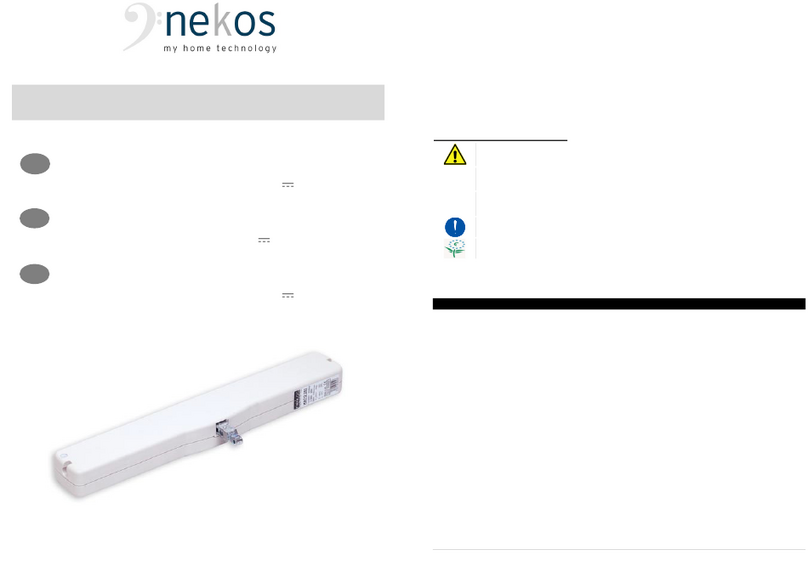
nekos
nekos KATO 253 User manual
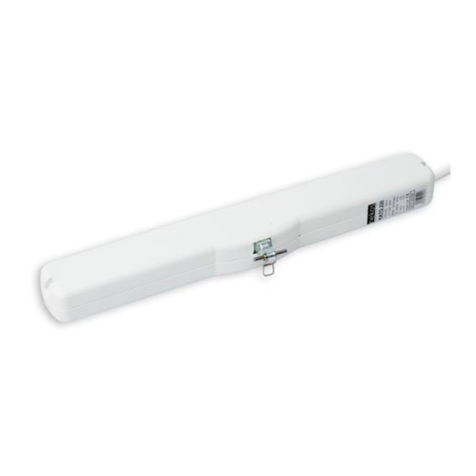
nekos
nekos KATO RADIO 230V User manual
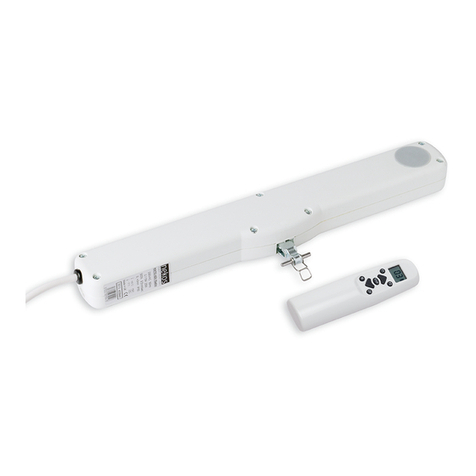
nekos
nekos KATO ADV RADIO User manual
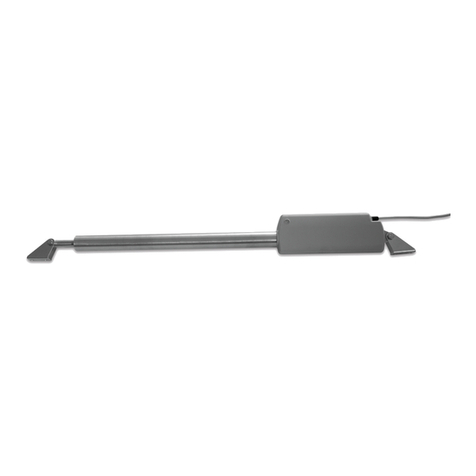
nekos
nekos ROCK 230 V User manual
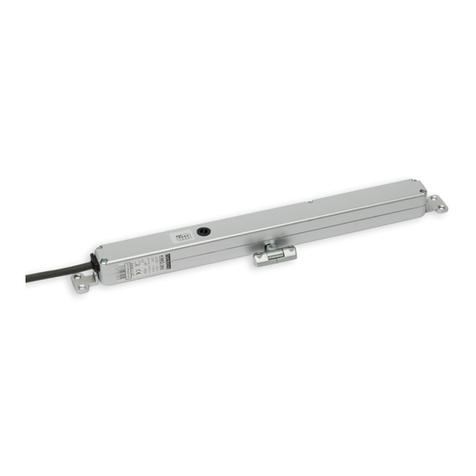
nekos
nekos KIMO 24V User manual

nekos
nekos SKY 450 User manual
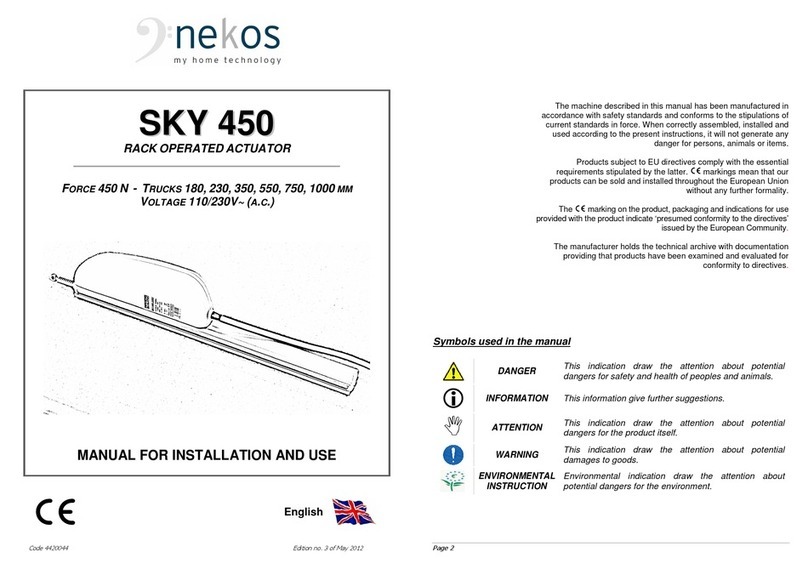
nekos
nekos SKY 450 Quick start guide
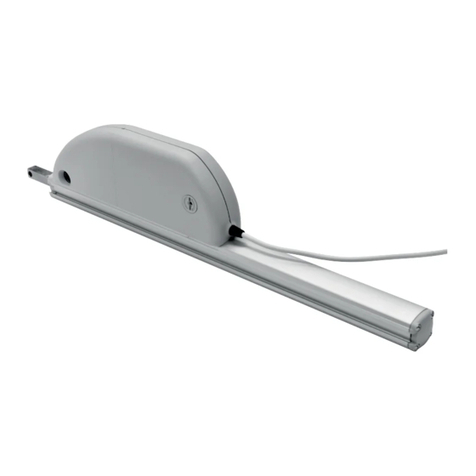
nekos
nekos SKYRO 650 User manual
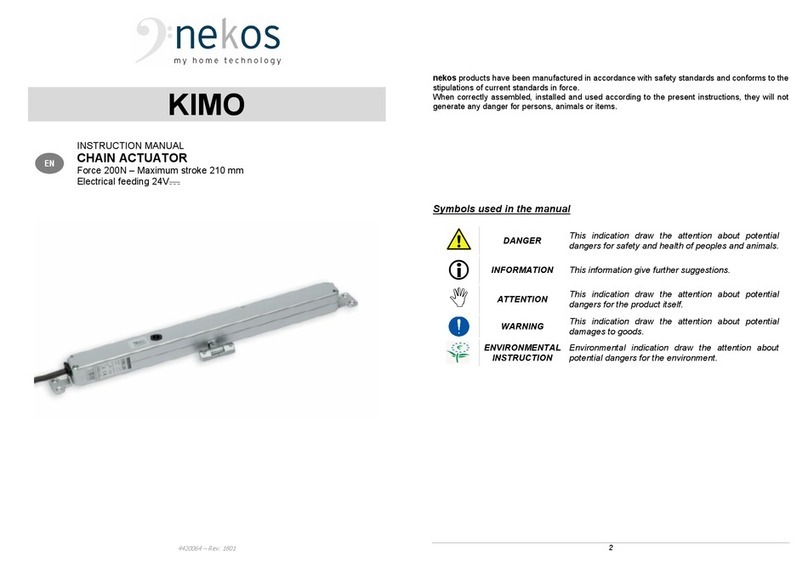
nekos
nekos KIMO User manual
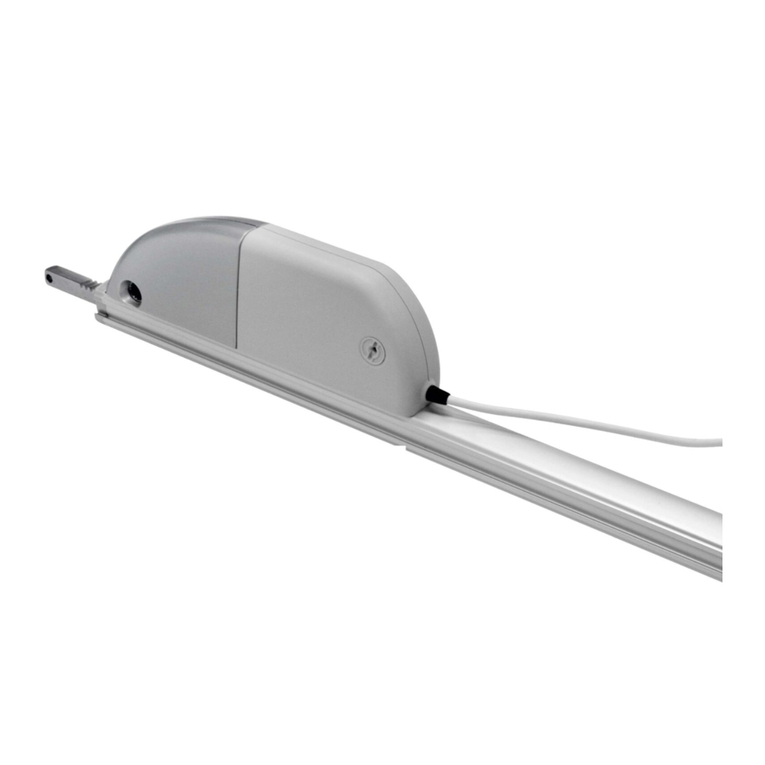
nekos
nekos SKYRO 850 User manual
Popular Controllers manuals by other brands
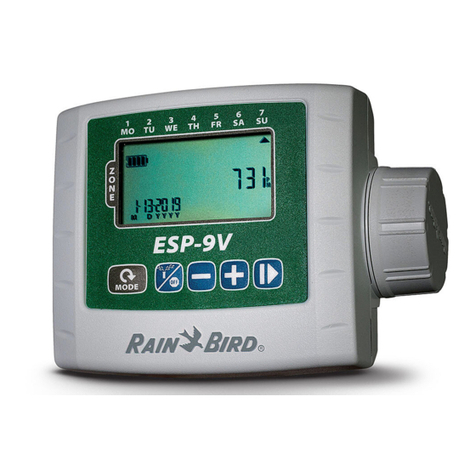
Rain Bird
Rain Bird ESP-9V user manual
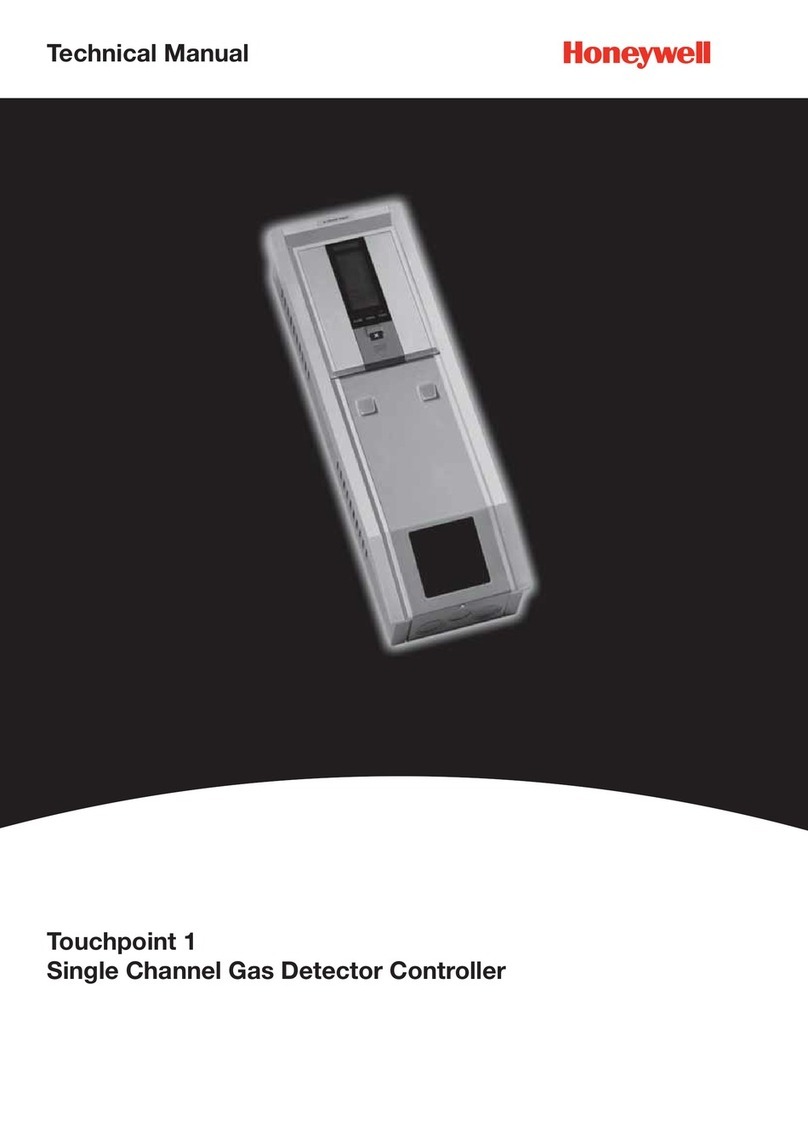
Honeywell
Honeywell Touchpoint 1 Technical manual
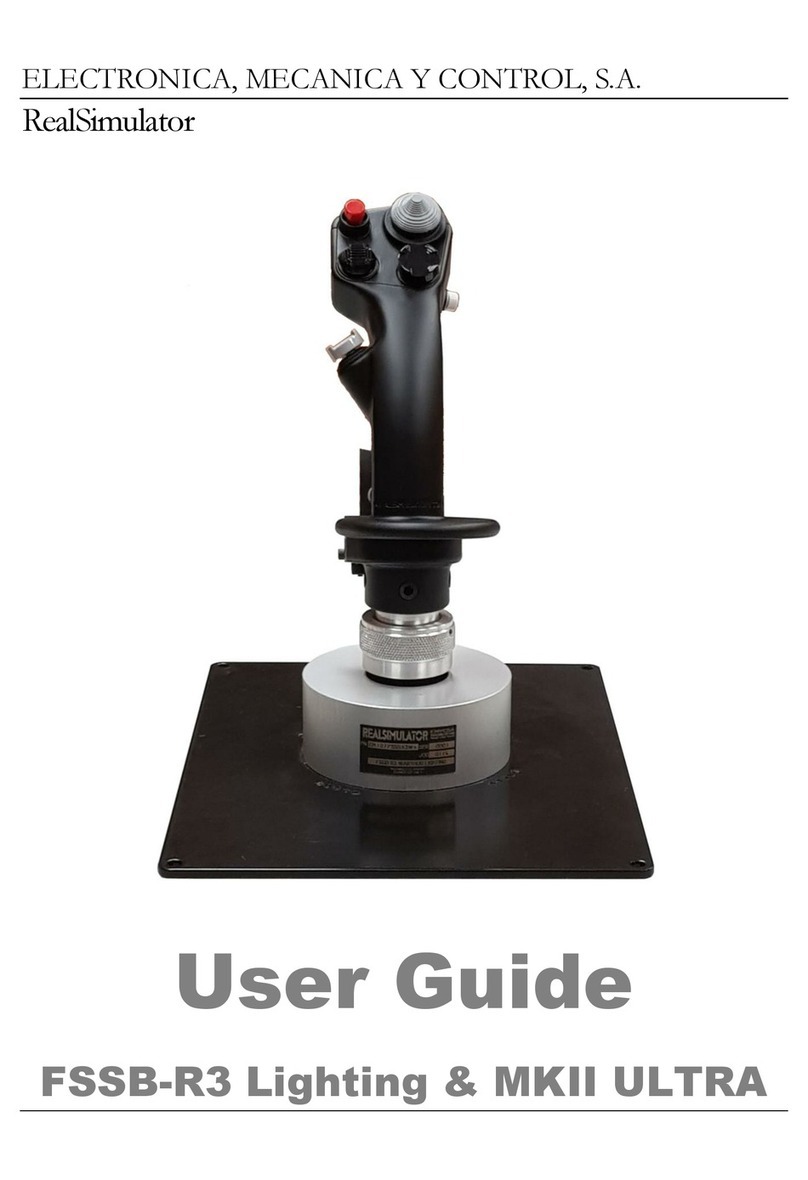
RealSimulator
RealSimulator FSSB-R3 Lighting user guide
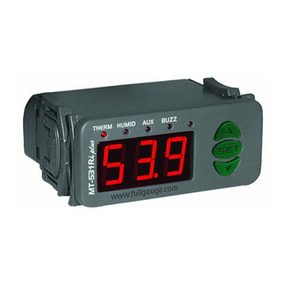
Full Gauge Controls
Full Gauge Controls MT-531Ri plus quick start guide
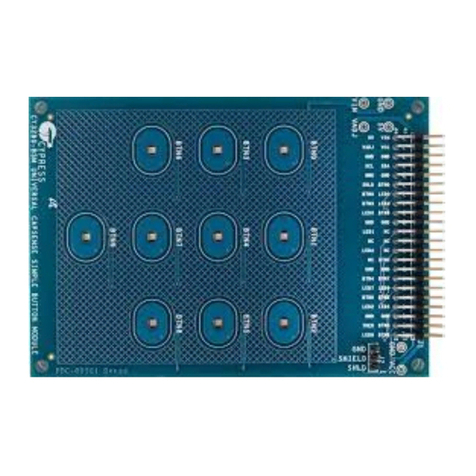
Cypress
Cypress UNIVERSAL CAPSENSE quick start guide
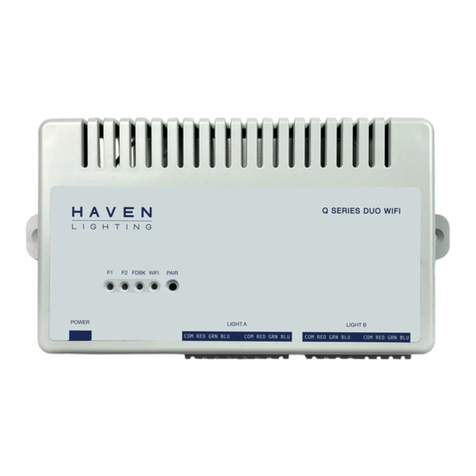
HAVEN LIGHTING
HAVEN LIGHTING Q Series Operation manual
